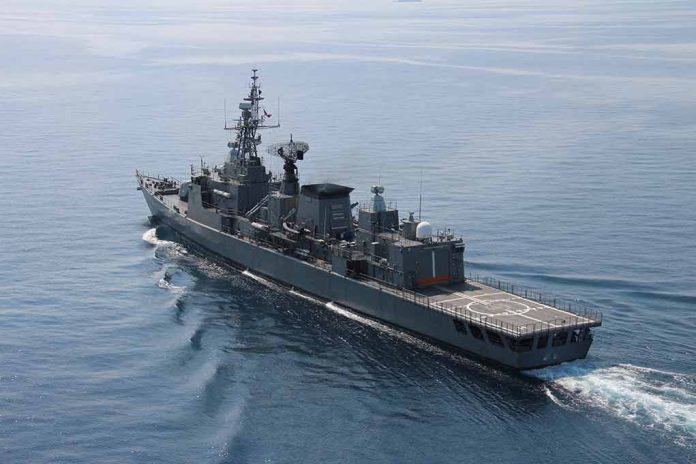
Russia has planted underwater spy sensors to track British nuclear submarines and map critical NATO undersea cables, raising alarm about national security threats beneath the waves.
Key Takeaways
- Russian spy sensors targeting Royal Navy submarines have been discovered in UK waters, indicating what former minister Tobias Ellwood calls a “greyzone war” with Russia
- The underwater espionage devices are believed to be tracking Britain’s nuclear-armed Vanguard submarines and mapping critical undersea infrastructure
- Britain is reportedly “behind the curve” in tracking Russia’s deep-sea operations, with calls for expansion of Royal Navy surveillance capabilities
- The UK’s vulnerability stems from its heavy reliance on undersea infrastructure – 90% of data and 60% of gas comes through undersea cables and pipelines
- The Ministry of Defence is working to enhance offshore infrastructure security in partnership with NATO allies
Russian Underwater Espionage Tactics Exposed
British authorities have discovered Russian spy sensors on the sea floor and washed up on UK shores, designed to track the movement of Britain’s nuclear deterrent submarines. These devices, found through mine hunting and underwater surveillance efforts by the Royal Navy, represent a significant escalation in Russia’s covert intelligence operations against Western military assets and critical infrastructure. The sensors appear to be part of a broader campaign to monitor NATO’s undersea activities, particularly focusing on the UK’s Vanguard submarines that carry nuclear missiles.
Former defense minister Tobias Ellwood has raised serious concerns about Britain’s readiness to counter this threat, suggesting the UK lacks sufficient surveillance capabilities. The discovery of these devices points to Russia’s increasingly aggressive “greyzone” warfare tactics – actions that fall short of conventional warfare but represent hostile intent against Western nations. Intelligence reports suggest Russian President Vladimir Putin’s regime has authorized a secret mission specifically targeting undersea cables, pipelines, and other maritime infrastructure vital to Western security interests.
Exclusive: Russian sensors attempting to spy on Britain's nuclear submarines have been found by the British military in UK waters
The discovery was deemed a threat to nation security and has never been made public – until now
— Harry Yorke (@HarryYorke1) April 5, 2025
Critical Infrastructure at Risk
Western nations, particularly the UK, have become increasingly dependent on undersea infrastructure for both communications and energy supply. According to defense experts, approximately 90% of the world’s data travels through undersea cables, while 60% of Britain’s gas supply comes through underwater pipelines. This dependence creates a strategic vulnerability that Russia appears to be exploiting through its covert underwater operations. The potential for espionage extends beyond military targets to critical civilian infrastructure.
Reports indicate Russian activity has expanded beyond simple surveillance. Intelligence sources have noted suspicious incidents in the Baltic Sea, where several undersea cables have been damaged in recent months. Russian autonomous submarines have been detected near deep-sea data cables without any visible support vessels, suggesting a clandestine operation. There are also indications that some Russian oligarchs’ superyachts may be involved in underwater probe operations, providing cover for intelligence gathering activities.
UK’s Response to the Underwater Threat
The British government has initiated several measures to counter Russia’s underwater espionage campaign. The Royal Navy has commissioned the RFA Proteus, a deep-sea surveillance vessel designed to protect critical undersea infrastructure. However, defense experts argue that one ship is insufficient given the scale of the threat. Ellwood has called for “half a dozen of these vessels if not more” to adequately secure Britain’s maritime interests. The Ministry of Defence is also reportedly seeking funding from technology and energy companies to enhance protection of underwater infrastructure.
A new project named Cabot will be deployed to enhance security, partnering with private industries that have stakes in undersea infrastructure. Some military experts have even suggested more aggressive countermeasures, including the possible use of sea mines – a tactic not employed since the Cold War. Despite these concerns, the Ministry of Defence maintains confidence in the security of Britain’s nuclear deterrent, stating that the continuous-at-sea nuclear deterrent remains undetected, having successfully maintained its patrols for 56 years. The government has also committed to increasing defense spending to 2.5% of GDP by 2027 to address emerging threats.









